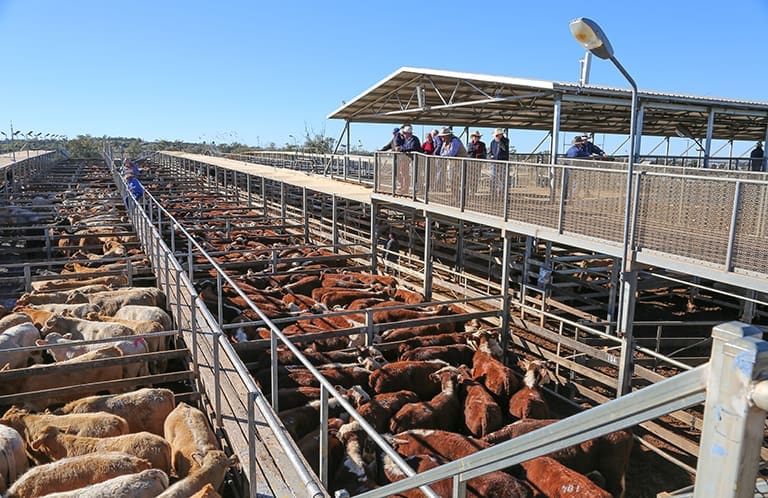AMONG the various Queensland towns aiming to become a future meat processing hub, a study commissioned by the Queensland Government last year singled out Roma as having strong potential based on cattle supply.
The April 2018 study, conducted by Victorian engineering firm MeatEng and the Queensland Department of Agriculture, considered beef cattle supply dynamics and assessed the commercial viability of various locations around the State for a future processing facility.
The published study does not contain extensive analysis but MeatEng’s conclusion was that of the 27 locations that were initially considered, only Roma showed positive excess earnings under average or expected supply and market conditions.
The report said this was aided by available cattle supply enabling better economies of scale and cattle transport cost savings an abattoir at Roma could benefit from.
There are no large-scale abattoirs within 300km of the region.
Maranoa Regional Council economic development councillor Cameron O’Neill told Beef Central Roma’s strategic position in a major production area – Roma is the location of Australia’s single largest cattle saleyard (although most cattle sold through the centre are store cattle, not prime) – underpinned its suitability for a new abattoir.
“The Queensland Government study said the Maranoa comes out on top as the most ideal location,” Cr O’Neill said.
“Based on that report we’re in the best position to catch the cattle, we ticked all the boxes for Roma to be the primary spot.”
In March 2019, Central Queensland cattle producer Val Cormack and his Chinese-born business partner, Linda Claxton, under the business name Valinda Pty Ltd, lodged a preliminary development application to build a high-impact industrial development with the Maranoa Regional Council.
Central to the application was a proposal to build an $84 million abattoir with the capacity to process 1200 cattle per day at a 200ha site owned by Valinda Pty Ltd on the Warrego Highway at Pickanjinnie, between Roma and Wallumbilla.
In August the Maranoa Regional Council voted in a 5-3 split decision to grant the preliminary development approval, which now paves the way for Valinda Pty Ltd to lodge a full application for the proposed development. Local media reports have indicated the proposal has attracted some community opposition based on the amount of groundwater it would require to operate.
Mr Cormack told Roma’s Western Star newspaper in March that he envisages the abattoir operating as a co-operative project, “where the money goes back to beef producers and the staff”.
In a statement to Beef Central (click here to read full statement), Mr Cormack said he hoped the proposal would take the beef industry and inland tourism well into the 21st century.
“This is a very exciting time for us and we are passionate about building a project that is mutually beneficial to all investors of the project, the abattoir staff, cattle producers and the community as a whole.
He said there are three key elements to the Pickanjinnie Abattoir project – processing boxed beef for export, value-adding and inland tourism.
Asked if the project has financial backing to proceed yet, Mr Cormack said the proponents are currently in discussions with several potential investors.
“We especially seek the involvement of local investors that wish to be part of this incredibly important rural project,” Mr Cormack said.
In relation to cattle numbers suitable for processing at Roma, Mr Cormack said in January 2016 he attended a Roma store sale where 5500 head of cattle were penned, including approximately 500 cows and calves.
“I arrived at the saleyard at 8:30am and drove away at 5pm. I spent the whole day at the scales. From my experiences as a beef producer and looking down on the cattle, for processing, I would of bid on 2500 head, and taken approximately 2000 head of different weight range, with enough fat cover for a good eating experiences, for processing.
“Then there is around 500-700 head each Thursday at the Roma fat sale for open biding competition.
“In an average season, in my experiences, as a beef producer, with using protein licks and sub-soiling (opening the ground up and retaining the rain where it falls) beef producers can produce a grass-fed carcass with enough fat for a good eating experience, that would suit a range of different markets.”
Regarding a potential cooperative, he said Valinda Team Pty Ltd is investigating the benefits of several cooperatives including Producer Cooperative-Workers Cooperative-and Cooperative Bank, which incorporate principles including voluntary and open membership, democratic member control and members economic participation.
He said the Valinda Team has applied for the project to be made a Project of Regional Significance, and expects to know soon if it is granted.


Sanitization Services, With over 30 experience in dismantling off meat processing factories for Sanitization practices on a night shift basis, between daily operation, Interested in contract cleaning off abattoir, Suppling local jobs, phone Scott Kirby 0457 027 994